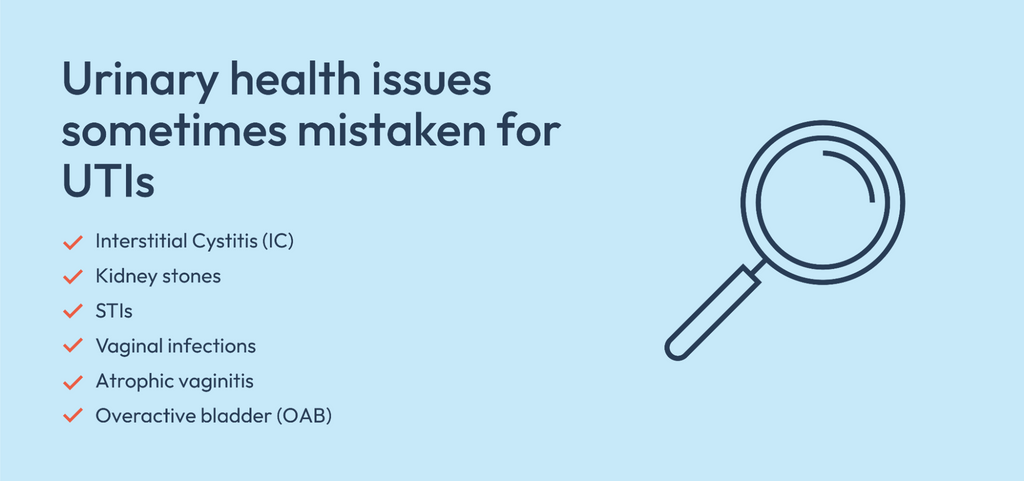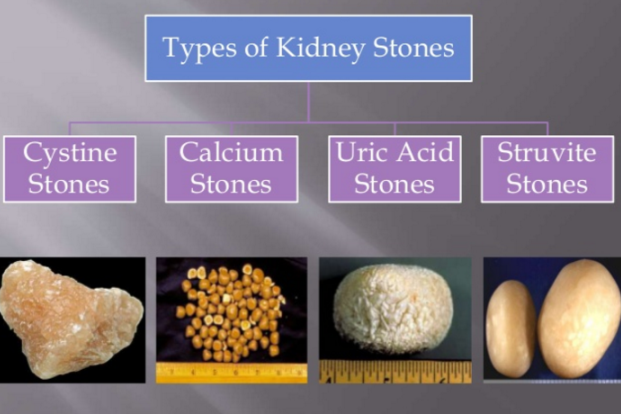Exploring Kidney Stones vs UTI: A Clear Summary of Causes, Symptoms, and Remedies
Exploring Kidney Stones vs UTI: A Clear Summary of Causes, Symptoms, and Remedies
Blog Article
A Comprehensive Evaluation of Therapy Choices for Kidney Stones Versus Urinary Tract Infections: What You Need to Know
The distinction in between therapy alternatives for kidney stones and urinary tract infections (UTIs) is vital for efficient client management. While UTIs are generally addressed with prescription antibiotics that offer rapid alleviation, the strategy to kidney stones can vary significantly based on specific aspects such as stone size and make-up. Non-invasive techniques like extracorporeal shock wave lithotripsy (ESWL) may be suitable for smaller sized stones, yet larger or obstructive stones commonly need more intrusive methods. Comprehending these nuances not just notifies clinical choices however also boosts individual outcomes, welcoming a better evaluation of each problem's treatment landscape.
Understanding Kidney stones
Kidney stones are difficult down payments formed in the kidneys from salts and minerals, and understanding their structure and formation is vital for effective administration. The primary kinds of kidney stones include calcium oxalate, calcium phosphate, struvite, uric acid, and cystine stones, each with distinct biochemical origins. Calcium oxalate stones are one of the most common, normally resulting from high levels of calcium and oxalate in the pee. Factors such as dehydration, dietary behaviors, and metabolic disorders can add to their development.
The development of kidney stones occurs when the concentration of specific materials in the pee increases, resulting in condensation. This condensation can be affected by urinary system pH, quantity, and the visibility of inhibitors or promoters of stone formation. As an example, reduced urine volume and high level of acidity are helpful to uric acid stone growth.
Recognizing these factors is important for both prevention and treatment (Kidney Stones vs UTI). Effective management techniques may include dietary modifications, increased liquid consumption, and, in some instances, medicinal treatments. By identifying the underlying reasons and sorts of kidney stones, healthcare companies can execute tailored approaches to mitigate reoccurrence and enhance person end results
Introduction of Urinary System Tract Infections
Urinary system infections (UTIs) prevail microbial infections that can impact any component of the urinary system, consisting of the kidneys, ureters, bladder, and urethra. Most of UTIs are caused by Escherichia coli (E. coli), a sort of microorganisms usually discovered in the intestines. Females are a lot more vulnerable to UTIs than men as a result of anatomical differences, with a much shorter urethra assisting in simpler microbial accessibility to the bladder.
Signs of UTIs can vary relying on the infection's place but usually include frequent peeing, a burning sensation throughout urination, over cast or strong-smelling urine, and pelvic discomfort. In much more extreme situations, specifically when the kidneys are included, symptoms might also consist of fever, cools, and flank discomfort.
Danger factors for establishing UTIs include sex-related task, specific sorts of birth control, urinary system tract irregularities, and a weakened immune system. Medical diagnosis usually entails urine examinations to identify the existence of microorganisms and other signs of infection. Prompt treatment is necessary to avoid difficulties, including kidney damage, and commonly involves prescription antibiotics customized to the specific germs entailed. UTIs, while common, need prompt acknowledgment and management to make sure reliable outcomes.
Treatment Choices for Kidney stones

If the stones are bigger or create considerable pain, non-invasive procedures such as extracorporeal shock wave lithotripsy (ESWL) may be employed. This technique makes Web Site use of audio waves to damage the stones into smaller fragments that can be more conveniently gone through the urinary system system.
In situations where stones are too large for ESWL or if they block the urinary system tract, ureteroscopy may be indicated. This minimally intrusive treatment involves the usage of a small extent to get rid of or damage up the stones straight.

Treatment Options for UTIs
How can doctor effectively resolve urinary system tract infections (UTIs)? The primary strategy includes an extensive assessment of the patient's signs and symptoms and clinical history, adhered to by proper diagnostic screening, such as urinalysis and urine culture. These examinations help recognize the original pathogens and establish their antibiotic vulnerability, guiding targeted treatment.
First-line treatment typically consists of antibiotics, with alternatives such as nitrofurantoin or trimethoprim-sulfamethoxazole, depending upon neighborhood resistance patterns. For straightforward cases, a brief course of prescription antibiotics (3-7 days) is frequently enough. In persistent UTIs, service providers might consider alternate strategies or prophylactic antibiotics, including way of living modifications to lower danger variables.
For clients with complicated UTIs or those with underlying health and wellness issues, a lot more aggressive treatment might be required, possibly involving intravenous antibiotics and additional analysis imaging to analyze for problems. Furthermore, person education on hydration, hygiene methods, and signs and symptom monitoring plays an essential function in avoidance and reappearance.
Comparing Results and Efficiency
Reviewing the results and effectiveness of therapy choices for urinary system tract infections (UTIs) is important for maximizing individual care. The main treatment for straightforward UTIs usually involves antibiotic treatment, with options such as trimethoprim-sulfamethoxazole, nitrofurantoin, and fosfomycin.
In comparison, treatment end results for kidney stones vary dramatically based on stone area, size, and structure. Choices vary from conservative administration, such as hydration and discomfort control, to interventional procedures like extracorporeal shock wave lithotripsy (ESWL) and ureteroscopy. While ESWL has a high success rate for smaller sized stones, problems can develop, demanding further interventions.
Inevitably, the performance of treatments for both conditions rests on exact medical diagnosis and tailored methods. While UTIs normally react well to anti-biotics, kidney stone management may need a complex approach. Continuous assessment of treatment outcomes is important to boost person experiences and reduce recurrence rates for both UTIs and kidney stones.
Conclusion
In summary, treatment methods for kidney stones and urinary system infections vary dramatically as a result of the distinctive nature of each problem. UTIs are largely resolved with anti-biotics, supplying punctual alleviation, while kidney stones demand customized interventions based on size and composition. Non-invasive methods such as extracorporeal shock wave lithotripsy appropriate for smaller sized stones, whereas bigger or obstructive stones may require ureteroscopy. Identifying these distinctions improves the capability to offer ideal patient care in handling these urological conditions.
While UTIs are generally addressed with anti-biotics that supply fast relief, the strategy this website to kidney stones can vary dramatically based on private factors such as stone size and composition. Non-invasive approaches like extracorporeal shock wave lithotripsy (ESWL) may be ideal for smaller sized stones, yet bigger or obstructive stones usually need more intrusive techniques. The key types of click site kidney stones include calcium oxalate, calcium phosphate, struvite, uric acid, and cystine stones, each with distinct biochemical beginnings.In contrast, therapy outcomes for kidney stones vary dramatically based on stone composition, place, and size. Non-invasive methods such as extracorporeal shock wave lithotripsy are appropriate for smaller sized stones, whereas bigger or obstructive stones may call for ureteroscopy.
Report this page